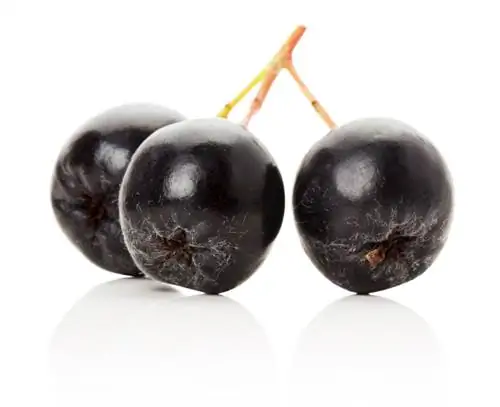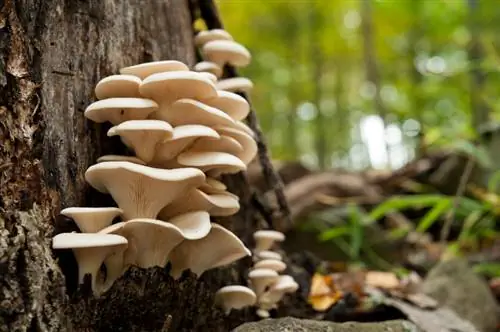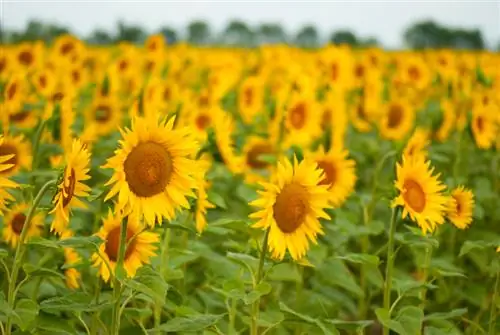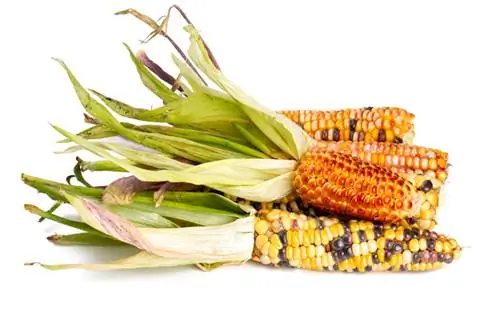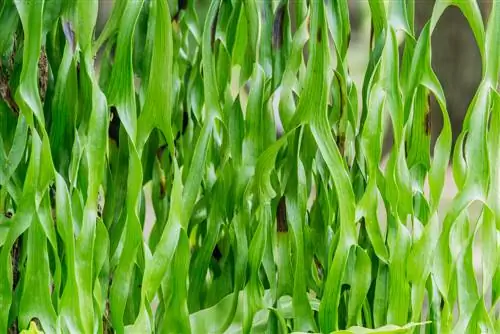- Author admin [email protected].
- Public 2023-12-16 16:46.
- Last modified 2025-06-01 06:02.
The chokeberry has already traveled a long way: it came from North America across the Atlantic to Russia - and from there to Europe. The undemanding plant is now available in many different cultivated forms, all based on the three original wild forms Aronia melanocarpa (black chokeberry), Aronia arbutifolia (felt chokeberry) and Aronia prunifolia.
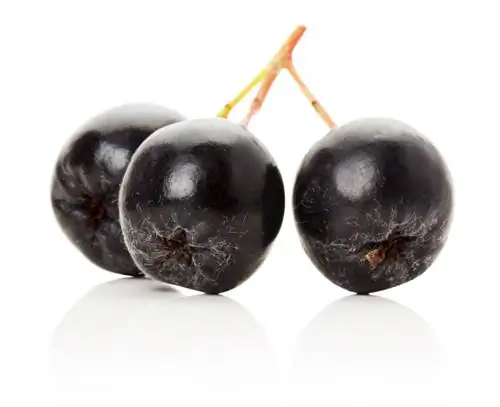
Which Aronia varieties are there?
Some well-known Aronia varieties are Hugin (Swedish), Viking (Finnish), Nero (Russian), Rubina (Hungarian) and Aron (Danish). These differ in growth habit, harvest time, yield and fruit size, but they have a common taste that is tart to sweet and sour.
Smaller wild forms with tarter fruits
The wild forms mentioned grow significantly lower, but are more branched than their cultivated counterparts. The berries of wild aronia are also smaller and have a tarter taste. This is mainly due to the higher concentration of tannic acid. The cultivated forms, on the other hand, were bred more towards a milder / sweeter taste. The variety Aronia prunifolia is particularly widespread in Canada and the USA, although it is basically just a natural hybrid (i.e. cross) between the two more common species Aronia melanocarpa and Aronia arbutifolia.
Characteristics
The “black chokeberry” (Aronia melanocarpa) is particularly important for cultivation in the garden, of which there are numerous different varieties from many European countries. However, only the high-yielding and very winter-hardy variety “Hugin” from Sweden is a pure representative of the “black chokeberry”; all others are actually hybrid products. The real “black chokeberry” is characterized by six to ten millimeter large, shiny black fruits and smaller, narrower leaves. The plants are not hairy. The hybrids, on the other hand, are characterized by larger leaves, fruits weighing 1.0 to 1.5 grams and purplish-black color. In addition, these berries are relatively shiny. In contrast to the “black chokeberry”, the bushes are slightly hairy.
Which Aronia varieties are there?
1. Hugin - Swedish variety that is extremely hardy and very robust. The shrub remains quite small and is therefore also suitable for planting in containers on the terrace or balcony.
2. Viking - This variety comes from cold Finland and is also very robust. The fruits are comparatively large, weighing 1.5 grams, and are also a very high-yielding variety.
3. Nero - This Aronia originally comes from Russia. It is currently the most productive and most widely grown variety. It has larger clusters and reaches a fruit weight of between 1.0 and 1.5 grams. The fruits are very juicy and are ideal for making jam and jelly. It is a late ripening variety.
4. Rubina - This Aronia from Hungary is a cross between Viking and another Russian variety. The shrub grows very tall (up to 3.5 meters!) and bears early-ripening, quite large berries with a fruit weight of between 1.2 and 1.8 grams.
5. Aron - This Aronia, which comes from Denmark, is fruitful, but bears many, but quite small, fruits.
The varieties listed are of course not complete, as there are numerous other variants from all possible countries. What is common to all varieties, however, is the taste of the fruit, which ranges from bitter to sweet and sour.
Tips & Tricks
It's not without reason that the Nero variety is grown so frequently: This aronia is particularly productive even with little care, but is not at all susceptible to diseases and pest infestation. The fruit protects itself through the high proportion of tannic acid in the peel - this makes it harmful to insects, among other things. not very attractive.

